Valuing Water Quality in Spring-Fed Recreational Areas in North Florida
Victoria Smith-Thomas, Michael H. Thomas, Daniel Solís
Agribusiness Program, CAFS, Florida A&M University, Tallahassee, USA.
Abstract
This study uses contingent valuation to determine consumer’s willingness-to-pay (WTP) for reducing hydrilla in two alternative spring-fed river systems in Northwest Florida -the Wacissa River (an open access park) and the Wakulla Springs (a gated park). Two dissimilar payment vehicles -gate and power bill fees- are used to assess the economic value of reducing the density of this aquatic weed. A total sample of 317 recreational users was used to estimate their WTP for a 50% reduction in the density of hydrilla. Our results show a favorable response from consumers to pay for a hydrilla reduction program. Specifically, at Wakulla Springs, the average WTP is $1.63 for monthly power bill surcharge and $3.76 for per trip gate fee. Conversely, at the Wacissa River the average WTP is $1.49 power bill surcharge. This study also analyzes the determinants affecting consumer’s WTP. Our results show that respondents who are from the local surrounding area are more likely to participate and pay a program to reduce hydrilla. In addition, the amenities available in the park also influence consumer’s WTP.
Keywords: Water-based recreation, economic analysis, hydrilla, WTP.
Introduction
Hydrilla (Hydrilla verticillata) is an invasive aquatic plant that negatively affects the ecosystem and agriculture, forestry and tourism industries. Hydrilla was introduced in the US through the aquarium trade in the early 1950s (Center et al. 1997). By the 1980s, many of Florida’s water bodies were infested with hydrilla. Hydrilla continued to spread in Florida and by 1995 covered 40,000 acres of water in 43% of the state’s public lakes (Langeland, 1996).
Controlling hydrilla is expensive. In the state of Florida, between 1980 and 2010, nearly $223 million was spent on controlling more than 431,000 acres of hydrilla in public lakes and rivers (Gillett-Kaufman et al., 2014). Since the efforts to control hydrilla are costly, public agencies could be more responsive to public preferences if they understood the economic benefit of removing hydrilla and compared those benefits to the cost of hydrilla control. The purpose of this study is to estimate the potential economic benefit of reducing hydrilla density in two freshwater systems in north Florida: Wakulla Springs (Wakulla county) and the Wacissa River (Jefferson county). This was accomplished by testing the applicability of a hypothetical market comprised of recreationists using a water-based resource to determine the willingness-to-pay (WTP) for reducing hydrilla in the two study sites. Furthermore, the results of this study could be useful to recreational managers and policy makers by documenting the economic value of reducing aquatic weeds in these two important freshwater systems.
Material and Methods
In this study two alternative models are developed to estimate people’s WTP for reducing hydrilla. In the first model a Hypothetical Demand Function is estimated to describe an economic market for the reduction of hydrilla. The second model offers additional information by estimating the determinants that affect people’s participation choice in the hydrilla reduction program (More detail on the methodology can be found in V. Smith-Thomas, 2013).
Model 1: Hypothetical Demand Function
The demand for reduction of hydrilla can be expressed as:
Q= f (P) (1)
where, Q= demand for 50% reduction in hydrilla; and P= WTP for 50% reduction in hydrilla. Price/quantity pairings are collected for ten price points from a random selection of site visitors for Wakulla Springs, and Wacissa River, using the hypothetical payment vehicles of a power bill and gate fee for the former and power bill only for the later, resulting in a total of three markets. Respondents are asked to accept the offered price points or offer an alternatively lower WTP. Responses are aggregated by price and price quantity the pairings and regressed using ordinary least squares to determine the coefficient of demand (β1), for each market represented as:
Q=β0+β1P (2)
To determine own price elasticity for each market, a natural log transformation is performed in order to measure directly the price elasticity for hydrilla reduction.
ln Q= β0+β1 lnP (3)
The β1 coefficients are tested for significance and compared across markets.
Model 2: Determinants of WTP
To evaluate the WTP participation choices by survey respondents, a quantitative choice model is developed and evaluated with a Probit analysis. Specifically, the Probit model used in this study can be expressed as:
y=f (Price, XGroup , XSite,) (4)
Where, y = 1 if offered price is accepted, 0 otherwise; Price= the price offered to the visitors for a 50% reduction in hydrilla; XGroup = vector of a group related characteristics and amenities; XSite = vector of site related characteristics. The specific variables used in the Probit model are presented and described in Tables 1 and 4. The dependent variable y is dichotomous and represents the decision of visitors either of Wakulla Springs and the Wacissa River to pay the price presented for the hydrilla reduction program or not.
Survey Instrument and Data
A random sample of 317 recreational users of Wakulla Springs and the Wacissa were interviewed between July 4, 2012 and September 3, 2012. Survey results were used to determine the respondent’s willingness to pay for the hypothetical reduction in hydrilla. The question asked some visitors to Wakulla Springs would they be willing to pay an increased power bill. Other visitors were asked if they would be willing to pay a higher entrance fee. Visitors to the Wacissa River were asked to pay an increase in their power bill. The descriptive statistics for the 215 responses at Wakulla Springs and the 102 responders from Wacissa River are presented in Table 1. Additional information regarding the survey instrument and data can be found in Smith-Thomas (2013).
Results and Discussion
Table 2 shows the list of the payment vehicles and the average WTP by the study site. For Wakulla Springs, the average price visitors were willing to add to their monthly power bill was $1.63. For those asked to pay a higher entrance fee, on average they were willing to pay an additional $3.76 per visit. Visitors to the Wacissa River were willing to pay an additional $1.49 per month on their power bill and this amount is not significantly different from Wakulla Springs. A majority of the respondents at both sites expressed that they were certain of their WTP estimate.
Next, demand functions (equations 2 and 3) were estimated for both sites and payment vehicles for all sites and payment vehicles the coefficients of demand were negative and significant at the 90% level or higher (see Table 3). This affirms the idea that the demand for hydrilla reduction is negative and follows the expected norms of consumer demand, meaning that the consumers are willing to pay for hydrilla reduction. For Wakulla Springs the power bill payment vehicle, there are no significant different between the study sites in WTP, the coefficients of demand or own price elasticity. This supports the idea that both the good (reducing hydrilla) and respondents are similar across sites. When comparing payment vehicle within one study site (Wakulla Springs), whereas the WTP figures are different, the coefficients of demand and own price elasticity are not. This support the idea that demand fundamentals do not vary by payment vehicle and would permit the conversion of data from one approach to the other without loss in data integrity. When comparing the Wacissa River power bill converted to a gate fee equivalent, while the WTP figures are significantly different, again there is conversion in all equivalent demand fundamentals with no significant differences between sites for both the coefficients of demand and elasticity.
Lastly, Table 4 presents the estimates for the Probit model (Determinants of WTP). As expected, the variable sign of PRICE is a negative and significant in determing if a visitor will accept an offer. Its supports the idea that visitors treat hydrilla reduction as a normal good, decreasing demand with an increasing price. The probability of visitors willing to pay a surcharge on their power bill or entrance fee is 8%. The estimated coefficient of the variable MALERATIO is positive and not significant suggesting that male visitors are more willing to pay an increased fee on their power bill for a reduction of hydrilla density. The effect of variable LOCAL is positive and significant suggesting that visitors from the local surrounding are willing to pay a surcharge on either their power bill or entrance fee for the reduction of hydrilla in both parks. The probability of their willing to pay is 18.6%. The estimated coefficient of the variable WACISSA is negative and significant predicting that visitors of both parks are less likely to pay an additional fee for the reduction of hydrilla density. The results show in that with an increase in the price of the power bill or gate fee then the probability of visitors to pay a decrease by 10%. Park characteristics were also found statistically significant when explaining people’s attitude to pay for hydrilla reduction.
Summary and Conclusions
A random sample of 317 recreational users of Wakulla Springs and the Wacissa River in north Florida was used to estimate consumer’s willingness to pay for a 50% reduction in hydrilla. Additionally, WTP estimates were tested for differences in the hypothetical payment vehicle. At Wakulla Springs, the average WTP is $1.63 per month represented as a power bill surcharge, or $3.76 per trip as a gate fee. For the Wacissa River, WTP averaged $1.49 per month (n=102) when represented as a power bill surcharge. We found no significance difference between the institutional basis of the payment vehicles, power bill vs. gate fee. However, demand for reducing hydrilla at Wakulla Springs is unitary elastic when based on an increased gate fee and elastic when based in a power bill surcharge. Demand for hydrilla reduction in the Wacissa River is elastic meaning that visitors to the Wacissa River would be sensitive to power bill surcharges.
In addition, a Probit analysis was conducted to model the program participation. Local visitors are more inclined to pay for reducing hydrilla, when they are male and/or more frequent visitors of the waterfront or gift shop. Results from this study show that respondents who are from the local surrounding area are more likely to participate and pay a program to reduce 50% of hydrilla density.
Acknowledgement: We thank USDA-APHIS for sponsoring this research
References
Center, T. D., M. J. Grodowitz, A. F. Cofrancesco, G. Jubinsky, E. Snoddy, and J. E. Freedman. 1997. Establishment of Hydrellia pakistanae (Diptera: Ephydridae) for the Biological Control of the Submersed Aquatic Plant Hydrilla verticillata (Hydrocharitaceae) in the Southeastern United States. Biological Control 8: 65-73.
Gillett-Kaufman, J.L., Lietze, V.-U., Bradshaw, J.P., and Gioeli, K.T. 2014. Hydrilla infestations in Florida freshwater bodies: How results from a management needs assessment survey helped develop suitable information delivery platforms. Journal of Extension 52: 3RIB2.
Langeland, K. A. 1996. Hydrilla verticillata (L.F.) Royle (Hydrocharitaceae), "The Perfect Aquatic Weed". Castanea 61: 293-304.
Smith-Thomas, V. 2013. Calibrating dissimilar payment vehicles in contingent valuation studies: An example of reducing hydrilla in two north Florida spring-fed river systems. M.S. Thesis, Florida A&M University.
Victoria Smith-Thomas, Michael H. Thomas, Daniel Solís
Agribusiness Program, CAFS, Florida A&M University, Tallahassee, USA.
Abstract
This study uses contingent valuation to determine consumer’s willingness-to-pay (WTP) for reducing hydrilla in two alternative spring-fed river systems in Northwest Florida -the Wacissa River (an open access park) and the Wakulla Springs (a gated park). Two dissimilar payment vehicles -gate and power bill fees- are used to assess the economic value of reducing the density of this aquatic weed. A total sample of 317 recreational users was used to estimate their WTP for a 50% reduction in the density of hydrilla. Our results show a favorable response from consumers to pay for a hydrilla reduction program. Specifically, at Wakulla Springs, the average WTP is $1.63 for monthly power bill surcharge and $3.76 for per trip gate fee. Conversely, at the Wacissa River the average WTP is $1.49 power bill surcharge. This study also analyzes the determinants affecting consumer’s WTP. Our results show that respondents who are from the local surrounding area are more likely to participate and pay a program to reduce hydrilla. In addition, the amenities available in the park also influence consumer’s WTP.
Keywords: Water-based recreation, economic analysis, hydrilla, WTP.
Introduction
Hydrilla (Hydrilla verticillata) is an invasive aquatic plant that negatively affects the ecosystem and agriculture, forestry and tourism industries. Hydrilla was introduced in the US through the aquarium trade in the early 1950s (Center et al. 1997). By the 1980s, many of Florida’s water bodies were infested with hydrilla. Hydrilla continued to spread in Florida and by 1995 covered 40,000 acres of water in 43% of the state’s public lakes (Langeland, 1996).
Controlling hydrilla is expensive. In the state of Florida, between 1980 and 2010, nearly $223 million was spent on controlling more than 431,000 acres of hydrilla in public lakes and rivers (Gillett-Kaufman et al., 2014). Since the efforts to control hydrilla are costly, public agencies could be more responsive to public preferences if they understood the economic benefit of removing hydrilla and compared those benefits to the cost of hydrilla control. The purpose of this study is to estimate the potential economic benefit of reducing hydrilla density in two freshwater systems in north Florida: Wakulla Springs (Wakulla county) and the Wacissa River (Jefferson county). This was accomplished by testing the applicability of a hypothetical market comprised of recreationists using a water-based resource to determine the willingness-to-pay (WTP) for reducing hydrilla in the two study sites. Furthermore, the results of this study could be useful to recreational managers and policy makers by documenting the economic value of reducing aquatic weeds in these two important freshwater systems.
Material and Methods
In this study two alternative models are developed to estimate people’s WTP for reducing hydrilla. In the first model a Hypothetical Demand Function is estimated to describe an economic market for the reduction of hydrilla. The second model offers additional information by estimating the determinants that affect people’s participation choice in the hydrilla reduction program (More detail on the methodology can be found in V. Smith-Thomas, 2013).
Model 1: Hypothetical Demand Function
The demand for reduction of hydrilla can be expressed as:
Q= f (P) (1)
where, Q= demand for 50% reduction in hydrilla; and P= WTP for 50% reduction in hydrilla. Price/quantity pairings are collected for ten price points from a random selection of site visitors for Wakulla Springs, and Wacissa River, using the hypothetical payment vehicles of a power bill and gate fee for the former and power bill only for the later, resulting in a total of three markets. Respondents are asked to accept the offered price points or offer an alternatively lower WTP. Responses are aggregated by price and price quantity the pairings and regressed using ordinary least squares to determine the coefficient of demand (β1), for each market represented as:
Q=β0+β1P (2)
To determine own price elasticity for each market, a natural log transformation is performed in order to measure directly the price elasticity for hydrilla reduction.
ln Q= β0+β1 lnP (3)
The β1 coefficients are tested for significance and compared across markets.
Model 2: Determinants of WTP
To evaluate the WTP participation choices by survey respondents, a quantitative choice model is developed and evaluated with a Probit analysis. Specifically, the Probit model used in this study can be expressed as:
y=f (Price, XGroup , XSite,) (4)
Where, y = 1 if offered price is accepted, 0 otherwise; Price= the price offered to the visitors for a 50% reduction in hydrilla; XGroup = vector of a group related characteristics and amenities; XSite = vector of site related characteristics. The specific variables used in the Probit model are presented and described in Tables 1 and 4. The dependent variable y is dichotomous and represents the decision of visitors either of Wakulla Springs and the Wacissa River to pay the price presented for the hydrilla reduction program or not.
Survey Instrument and Data
A random sample of 317 recreational users of Wakulla Springs and the Wacissa were interviewed between July 4, 2012 and September 3, 2012. Survey results were used to determine the respondent’s willingness to pay for the hypothetical reduction in hydrilla. The question asked some visitors to Wakulla Springs would they be willing to pay an increased power bill. Other visitors were asked if they would be willing to pay a higher entrance fee. Visitors to the Wacissa River were asked to pay an increase in their power bill. The descriptive statistics for the 215 responses at Wakulla Springs and the 102 responders from Wacissa River are presented in Table 1. Additional information regarding the survey instrument and data can be found in Smith-Thomas (2013).
Results and Discussion
Table 2 shows the list of the payment vehicles and the average WTP by the study site. For Wakulla Springs, the average price visitors were willing to add to their monthly power bill was $1.63. For those asked to pay a higher entrance fee, on average they were willing to pay an additional $3.76 per visit. Visitors to the Wacissa River were willing to pay an additional $1.49 per month on their power bill and this amount is not significantly different from Wakulla Springs. A majority of the respondents at both sites expressed that they were certain of their WTP estimate.
Next, demand functions (equations 2 and 3) were estimated for both sites and payment vehicles for all sites and payment vehicles the coefficients of demand were negative and significant at the 90% level or higher (see Table 3). This affirms the idea that the demand for hydrilla reduction is negative and follows the expected norms of consumer demand, meaning that the consumers are willing to pay for hydrilla reduction. For Wakulla Springs the power bill payment vehicle, there are no significant different between the study sites in WTP, the coefficients of demand or own price elasticity. This supports the idea that both the good (reducing hydrilla) and respondents are similar across sites. When comparing payment vehicle within one study site (Wakulla Springs), whereas the WTP figures are different, the coefficients of demand and own price elasticity are not. This support the idea that demand fundamentals do not vary by payment vehicle and would permit the conversion of data from one approach to the other without loss in data integrity. When comparing the Wacissa River power bill converted to a gate fee equivalent, while the WTP figures are significantly different, again there is conversion in all equivalent demand fundamentals with no significant differences between sites for both the coefficients of demand and elasticity.
Lastly, Table 4 presents the estimates for the Probit model (Determinants of WTP). As expected, the variable sign of PRICE is a negative and significant in determing if a visitor will accept an offer. Its supports the idea that visitors treat hydrilla reduction as a normal good, decreasing demand with an increasing price. The probability of visitors willing to pay a surcharge on their power bill or entrance fee is 8%. The estimated coefficient of the variable MALERATIO is positive and not significant suggesting that male visitors are more willing to pay an increased fee on their power bill for a reduction of hydrilla density. The effect of variable LOCAL is positive and significant suggesting that visitors from the local surrounding are willing to pay a surcharge on either their power bill or entrance fee for the reduction of hydrilla in both parks. The probability of their willing to pay is 18.6%. The estimated coefficient of the variable WACISSA is negative and significant predicting that visitors of both parks are less likely to pay an additional fee for the reduction of hydrilla density. The results show in that with an increase in the price of the power bill or gate fee then the probability of visitors to pay a decrease by 10%. Park characteristics were also found statistically significant when explaining people’s attitude to pay for hydrilla reduction.
Summary and Conclusions
A random sample of 317 recreational users of Wakulla Springs and the Wacissa River in north Florida was used to estimate consumer’s willingness to pay for a 50% reduction in hydrilla. Additionally, WTP estimates were tested for differences in the hypothetical payment vehicle. At Wakulla Springs, the average WTP is $1.63 per month represented as a power bill surcharge, or $3.76 per trip as a gate fee. For the Wacissa River, WTP averaged $1.49 per month (n=102) when represented as a power bill surcharge. We found no significance difference between the institutional basis of the payment vehicles, power bill vs. gate fee. However, demand for reducing hydrilla at Wakulla Springs is unitary elastic when based on an increased gate fee and elastic when based in a power bill surcharge. Demand for hydrilla reduction in the Wacissa River is elastic meaning that visitors to the Wacissa River would be sensitive to power bill surcharges.
In addition, a Probit analysis was conducted to model the program participation. Local visitors are more inclined to pay for reducing hydrilla, when they are male and/or more frequent visitors of the waterfront or gift shop. Results from this study show that respondents who are from the local surrounding area are more likely to participate and pay a program to reduce 50% of hydrilla density.
Acknowledgement: We thank USDA-APHIS for sponsoring this research
References
Center, T. D., M. J. Grodowitz, A. F. Cofrancesco, G. Jubinsky, E. Snoddy, and J. E. Freedman. 1997. Establishment of Hydrellia pakistanae (Diptera: Ephydridae) for the Biological Control of the Submersed Aquatic Plant Hydrilla verticillata (Hydrocharitaceae) in the Southeastern United States. Biological Control 8: 65-73.
Gillett-Kaufman, J.L., Lietze, V.-U., Bradshaw, J.P., and Gioeli, K.T. 2014. Hydrilla infestations in Florida freshwater bodies: How results from a management needs assessment survey helped develop suitable information delivery platforms. Journal of Extension 52: 3RIB2.
Langeland, K. A. 1996. Hydrilla verticillata (L.F.) Royle (Hydrocharitaceae), "The Perfect Aquatic Weed". Castanea 61: 293-304.
Smith-Thomas, V. 2013. Calibrating dissimilar payment vehicles in contingent valuation studies: An example of reducing hydrilla in two north Florida spring-fed river systems. M.S. Thesis, Florida A&M University.
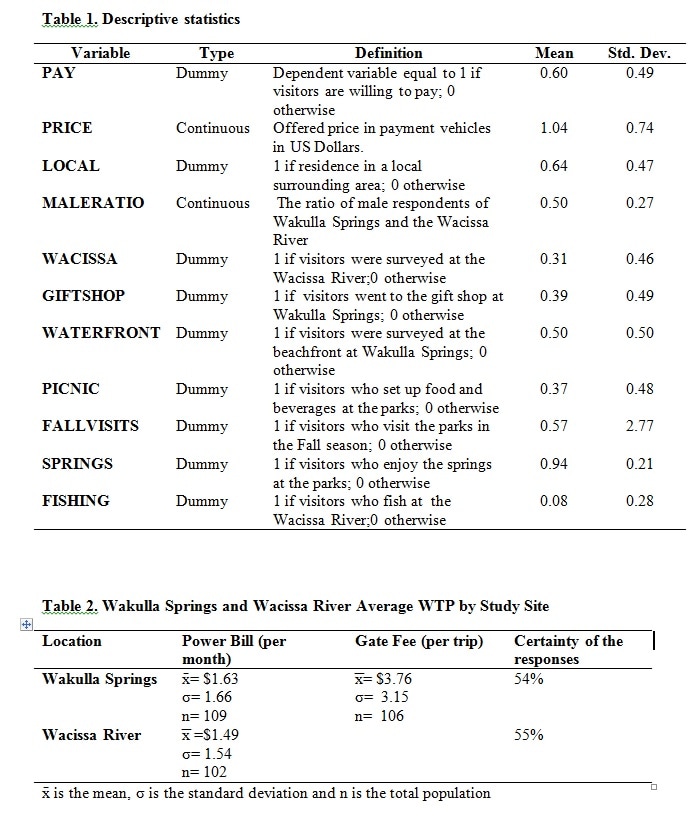
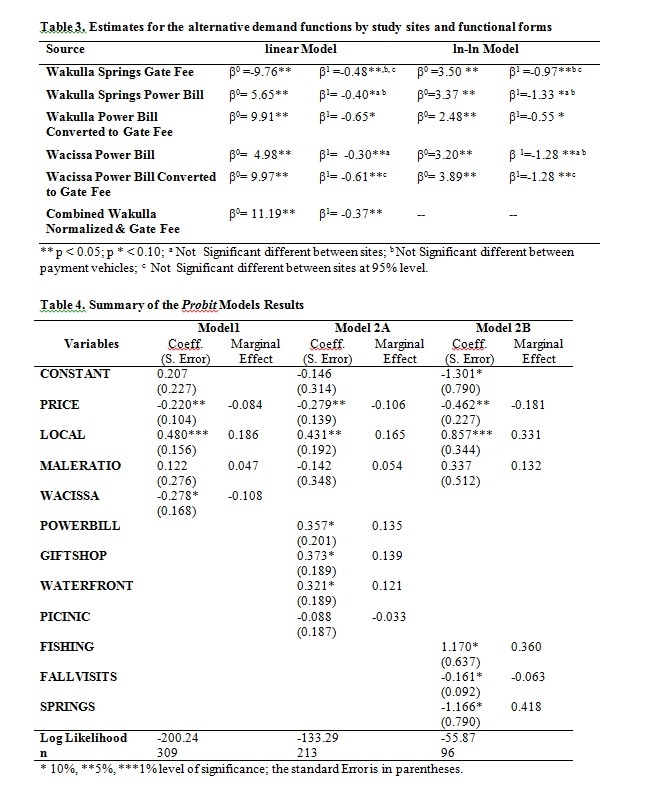
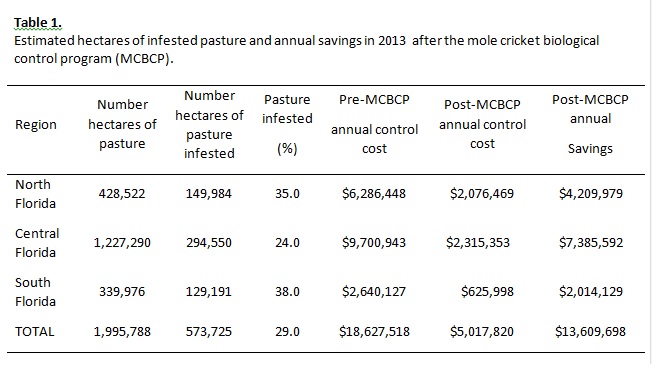
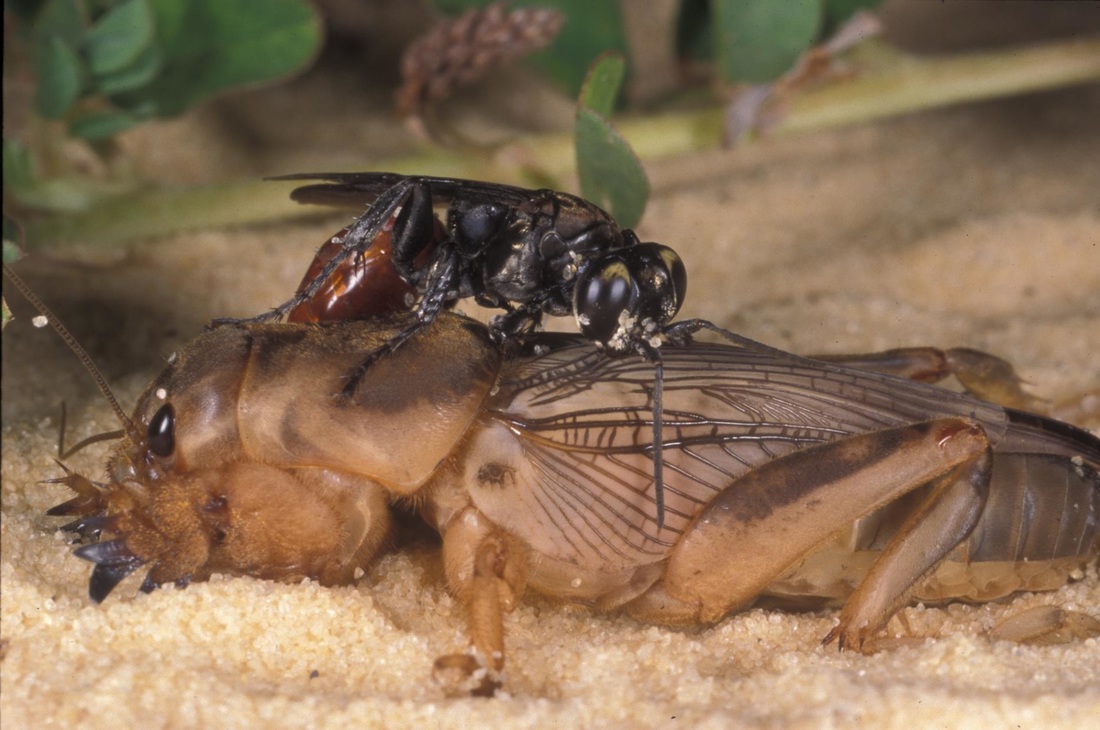
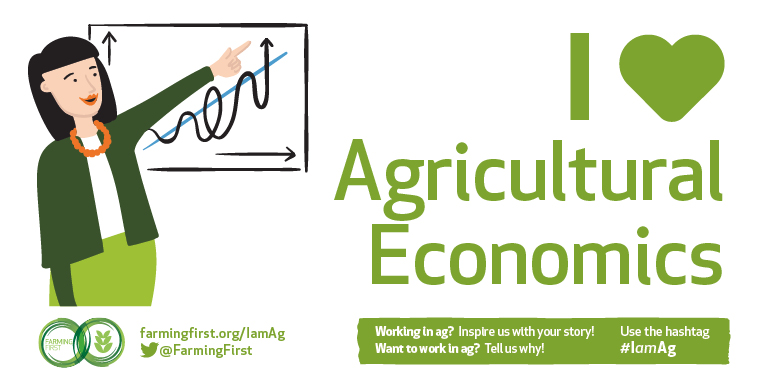
 RSS Feed
RSS Feed
